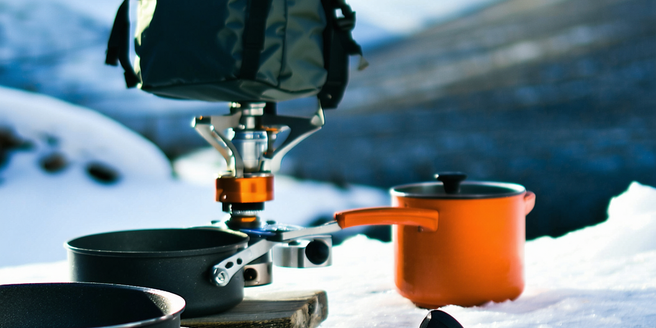
Understanding Cold-Weather Cooking Challenges
Cooking in freezing temperatures presents unique challenges for backpackers. Cold weather can dramatically affect stove performance, as fuel efficiency decreases in low temperatures, leading to prolonged cooking times. Additionally, carrying enough fuel becomes crucial, especially in remote areas where resupply is not an option. Another challenge is food freezing quickly, which can make both preparation and consumption difficult. To overcome these obstacles, it’s important to have a reliable stove that works well in cold environments. Windscreen usage and stove placement are equally important to shield the flame and retain heat. Pre-planning meals that require minimal cooking and opting for easily rehydratable foods can aid in conserving limited resources. Understanding these challenges is vital in ensuring that you stay nourished and warm during your winter excursions.
Essential Gear for Winter Backpack Cooking
When backpacking in winter conditions, it’s vital to have gear that not only performs well in cold environments but also remains lightweight and portable. Start with a reliable stove that operates effectively in freezing temperatures, such as a liquid fuel stove, which typically outperforms canister stoves in the cold. A suitable pot with a lid will ensure quicker boiling times and better fuel efficiency. Insulated cooking systems can maintain heat longer, conserving valuable fuel. Additionally, a lightweight, compact windscreen can protect your stove’s flame from gusts, improving overall efficiency. Do not overlook the importance of a lightweight, durable pot scraper and a multi-tool for preparing and cleaning up meals. Effective gear selection ensures enjoyable and safe winter cooking experiences, allowing for delicious meal preparation despite the cold.
Choosing Lightweight and Nutritious Ingredients
Selecting the right ingredients is critical for maintaining energy and warmth during a winter backpacking trip. Opt for lightweight, high-caloric foods that can be prepared with minimal cooking to conserve fuel. Dehydrated and freeze-dried meals work well as they are both lightweight and require only boiling water. Additionally, bring along ingredients like instant rice, couscous, or pasta for quick, satisfying base meals. Incorporate protein-rich options like canned tuna or chicken, and don’t forget nuts and seeds for balanced nutrition. Compact spices and sauces can greatly enhance flavor without adding weight. Remember that fats, such as cheese or olive oil, provide essential calories for warmth. Packing wisely with these ingredients can help keep energy levels up and deliver a more enjoyable winter outdoor experience.
Hot Meal Prep Techniques for Icy Conditions
Preparing hot meals in icy conditions requires strategic planning and efficient techniques. Start by setting up your cooking area in a sheltered spot to limit exposure to wind, which can cool cookware and food quickly. Utilize a windscreen to ensure maximum efficiency from your stove. Pre-soak grains like rice or oats before leaving, reducing cooking time and conserving fuel. Consider pre-packaging meals into boil-in-bag options, which allow for straightforward cooking and minimal cleaning. To keep the contents of your pot hot longer, use insulated pot cozies. This technique reduces fuel requirements and retains heat effectively. Quick-cooking recipes alleviate the strain on fuel supplies, allowing you to enjoy warm meals without delay. These tactics ensure a satisfying, hot meal that combats the harsh cold environment.
Safety Tips for Winter Cooking on the Trail
Safety during winter cooking should be a key priority to prevent accidents and ensure an enjoyable trip. First, always set up your cooking area on stable ground to avoid tipping over the stove. Avoid cooking inside your tent to reduce the risk of carbon monoxide poisoning and potential fire hazards; instead, use a tent vestibule or other wind-protected area. Wearing gloves when handling metal cookware prevents cold burns. Clearly label fuel containers to avoid mix-ups with water bottles. Bring along a portable fire extinguisher or stove repair kit for emergencies. Lastly, ensure all food is securely stored after cooking to deter wildlife. By following these safety guidelines, you can create a safe environment, minimizing potential risks associated with cooking in winter.
Simple and Hearty Winter Recipes for Backpackers
A repertoire of simple, hearty recipes ensures tasty and satisfying meals on a winter backpacking trip. Start with oatmeal enhanced by dried fruits and nuts for breakfast, providing warmth and essential nutrients. For lunch, a thermos filled with instant noodle soup can be both comforting and warming. Dinner options include a one-pot pasta dish with dehydrated vegetables and packaged tuna, or a flavorful rice bowl with quick-cooking grains and pre-cooked sausage. Always consider seasoning meals with packs of soy sauce, hot sauce, or spices carried in lightweight containers. Remember, planning and practicing meals before the trip ensures that you are adequately prepared. These simple recipes, paired with proper gear, can elevate your winter backpacking experience, keeping you energized and satisfied amidst icy conditions.
